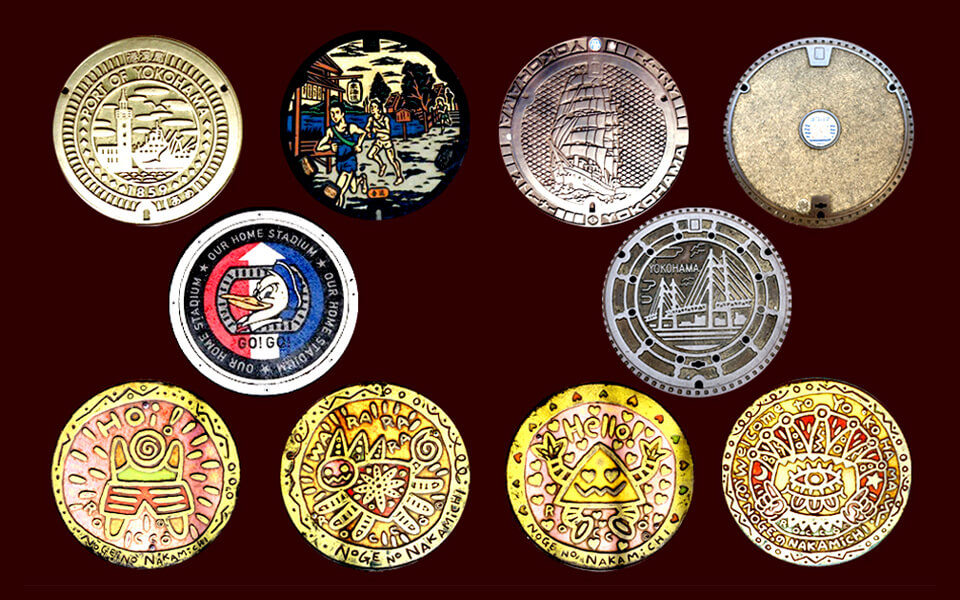(Un)Curated Art

True art need not be certified.
It should, however, be discovered.
The Yokohama Museum of Art or Yokohama Triennale, an international contemporary art exhibition, might be a visitor’s go-to for modern art in the port city. There is, however, something profound to be found in less obvious places — a type of art more primitive than it is pretentious.
Take manhole covers, for one. While a seemingly uninteresting fixture in most countries, manhole covers have flourished in Japan as an opportunity to express a community’s identity (there’s even a Japan Society of Manhole Covers). The colorful, expertly crafted covers embellishing Yokohama’s streets are a reflection of the diverse and historically rich port city. In fact, Yokohama is the first city in Japan to establish a modern underground sewage system. Distinguished British military engineer Henry Spencer Palmer catalyzed the development of these waterworks in the late 1800s (during the Meiji era), and thus the manhole covers are a legacy of Yokohama's own transition to modernity. They’re also a reminder that art reaches far beyond the bounds of a museum. Right beneath your feet is an abundance of designs and stories worth appreciating. Looking toward the sky, you may also delight in the view of Yokohama Santo (Three Towers), three historical structures in the Kannai area nicknamed The King, The Jack and The Queen.
Dubbed The King, the Kanagawa Prefectural Office was built in 1928 (early Showa era) and boasts the beauty of the then popularized Art Deco architectural style. The Yokohama Customs building, known as The Queen, has an exotic and eye-catching silhouette reminiscent of an Islamic shrine. The Jack, the Yokohama Port Opening Memorial Hall, is an equally stunning vision. According to legend, if you go to a place where you can see all three buildings at once, your wish will come true. Indeed, Yokohama is a city steeped in art — a place of discovery for those with a truly discerning eye.
Discover manhole art at the following spots in Yokohama:
- “A View of the Harbor” (Port and Harbor Bureau of the City of Yokohama) — Osanbashi Pier area in Naka-ku
- Waterworks Bureau mascot “Kabanodai-chan” (an older design) — Motomachi area in Naka-ku
- “Marinos-kun” — Nissan Stadium in Shin-Yokohama
- “Hakone Ekiden” (Tokaido) — JR Totsuka Station area in Totsuka-ku
- “Roccó Satoshi” Design — Noge Nakamichi in Naka-ku
- “Nippon Maru” — Minato Mirai area in Naka-ku
